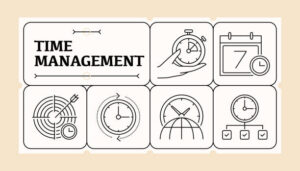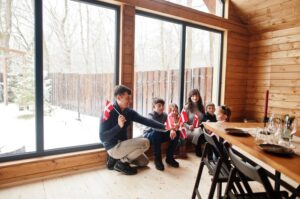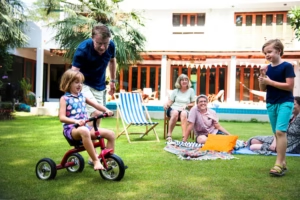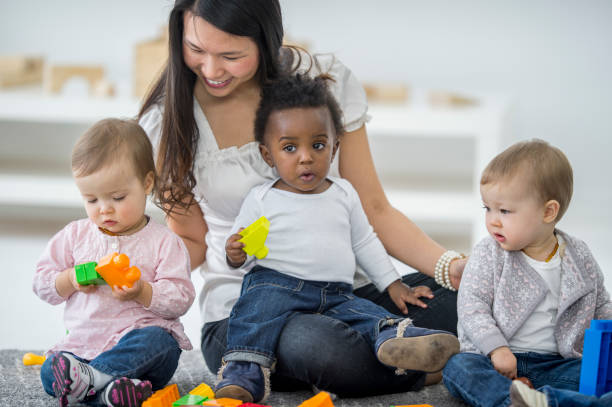How To Create A Balanced Daily Routine For Daycare
Introduction to Daily Routine Daycare

One of the most important things for a good daycare is to have a regular Daily Routine For Daycare. A well-planned day not only helps a child grow, but it also makes their lives more stable, comfortable, and predictable. Knowing what will happen next in their day makes kids feel safe.
It helps individuals feel like they are in charge of their circumstances, which makes changes easier and lessens worry or bewilderment. Children can develop physically, emotionally, and intellectually in a secure environment in a structured Daily Routine For Daycare.
Planning every element of the day, from playtime to meals to nap time to learning activities, makes sure that all the kids have a well-rounded experience within a consistent Daily Routine For Daycare. Caregivers and staff also benefit from routines because they help them manage their time better and improve their planning, communication, and monitoring in the Daily Routine For Daycare.
1. Why is a daily routine important for daycare?

A daily routine in daycare is more than simply a timetable; it’s a way to help kids grow up healthy. Kids learn about time, order, and structure when they stick to a schedule. This helps kids learn vital life skills including being responsible, working together, and being patient.
Daycare procedures can assist keep things running smoothly by eliminating disruption and behavioral problems. Kids learn fast what is expected of them, which makes them less likely to act out and more likely to pay attention. Also, having a schedule helps with emotional growth.
Kids do well with things that are the same and repeated because they help them feel protected and cared for. It also helps kids learn since the planned activities provide them time to work on their language skills, motor abilities, and social skills. The routine at daycare is similar to the one at home, which makes it simpler for babies and toddlers to adjust. Older kids do better in school and in life when they have structure that is right for their age.
2. Licensing and Developmental Requirements

To make sure the kids are safe and growing the right way, every daycare has to follow certain rules for licensing and development. Usually, state or national authorities determine these rules, which cover everything from the credentials of workers and the number of caregivers to children to nutrition standards and daily schedules.
-
The Importance of a Daily Routine
A daily routine helps satisfy these criteria by making sure that planned activities cover all areas of development, including physical, cognitive, emotional, and social. Infants need regular times to eat and sleep, and toddlers learn and make friends via play.
-
Developmental Needs by Age Group
Preschoolers need more controlled learning hours, while older kids do better with homework help, socializing with other kids, and creative discovery.
-
Meeting Requirements Builds Trust
Licensing authorities frequently want precise records of daily schedules that show when children conduct gross and fine motor activities, take breaks, eat, and practice good hygiene. Meeting these requirements makes parents trust you and makes sure the care atmosphere is good.
2.1 Daycare Schedule for 1 – 5 Year Olds

- Kids between the ages of 1 and 5 are going through a very important time of fast growth and learning. At this point, a daycare schedule needs to be flexible yet still structured enough to help kids grow. For kids this age, a typical day can start with drop-off and free play, then circle time where they sing songs, hear tales, and learn about the calendar.
- After that, there are planned activities including arts & crafts, sensory play, and time outside. After a healthy snack, there are more learning centers or games to play. Most kids want to take a nap or have some quiet time after lunch, which is both a social and nutritional time.
- There can be storytime, creative movement, and more outside play in the afternoon before you pick up your child. These timetables help kids learn how to read and write, as well as how to use their bodies and get along with others. Regular meal and nap times help kids feel balanced all day by keeping their biological rhythms in check.
2.2 Daycare Schedule for 6 – 10 Year Olds

- Routines for kids ages 6 to 10 become increasingly academic and skill-based, but there is still an opportunity for fun and creativity. A welcoming routine usually starts their day at daycare, followed by homework help or activities that help them learn more. Reading, group conversations, and activities that help kids think logically and talk to each other may be part of the morning sessions.
- Physical activity is important, thus the daily schedule includes games that can be played inside or outside. After a healthy lunch, the students read quietly or do mindfulness activities. In the afternoon, there may be STEM projects, art workshops, or group games.
- These routines help kids get ready for school and learn how to work with others and manage their time. At this age, kids also start to help plan their time by picking activities from a set list. This helps them become more independent and makes sure they are learning and having fun in a variety of ways.
2.3 Daycare Schedule for 10 – 15 Year Olds

- Kids between the ages of 10 and 15 are becoming more independent and conscious of themselves. At this point, a daycare routine needs to take into account their growing mental and emotional demands. They can start their day by writing in a journal or defining personal goals, and then they can have scheduled tutoring sessions or work on group projects.
- Team-based activities, debating, and working together to learn are all good ways to spend time with others. To stay healthy and lower stress, you should make physical activity, like yoga or sports, a regular part of your life. During the middle of the day, there are healthy lunches and open discussion groups to help people become more emotionally intelligent.
- After lunch, they can keep their minds busy with hands-on activities like robotics, writing groups, or entrepreneurship challenges. In the late afternoon, when it’s quiet, you can think about yourself or read before you pick up your child. These routines get older kids ready for real-world responsibilities and help them learn how to be responsible, communicate, and lead.
2.4 Daycare Schedule for 16 – 20 Year Olds

- Teenagers and young adults between the ages of 16 and 20 need very specific habits that help them grow academically, professionally, and emotionally. Independent study, mentoring sessions, or career readiness programs could be part of a morning routine.
- You can use the mornings to work on skills like algebra, drafting a resume, or learning how to operate a computer. During the day, there are lunch and social group conversations when people talk about their aspirations for the future or problems they are having right now. You might do community service initiatives, internships, or job training modules in the afternoon.
- Some routines incorporate lessons on mindfulness, mental health, and how to deal with stress. Evening activities could include going out for fun or doing creative arts. These habits help young individuals gain confidence, learn important life skills, and make the move to adulthood easier.
3. Daily Schedule Components
A great daycare routine is made up of parts that are always the same and well-planned to fulfill both emotional and developmental needs. Every aspect of the day should have a purpose, like learning, resting, or just having fun. Here are the most important parts of a daily daycare schedule:
Morning Greetings: Time to Arrive and Connect
- Caregivers greet kids with warmth.
- There are specific cubbies or lockers for personal items.
- Parents can quickly tell staff about notes or worries.
- The tone for the rest of the day is set during this time.
Morning Meet-Up: Sharing Smiles and Plans
- Songs, greetings, and announcements to welcome the group
- Kids talk about the weather, the calendar, or basic things that happen each day.
- It helps with communication, social awareness, and confidence in routines.
- Introduces the day’s learning goal or topic
Brain Boost Time: Organized Learning Activities
- Lessons that are short and based on age, like numbers, alphabet, shapes, and colors
- Things like relating stories, showing and telling, or playing games with others
- Helps with memory, listening skills, and curiosity
- Teachers change the material to fit the kids’ attention spans.
Grow & Learn Zones: Building Essential Skills
- Kids move from one play area to another, like blocks, puzzles, science corners, and art tables.
- Encourages independence, critical thinking, and motor skills
- Teachers keep an eye on things and ask open-ended questions to help students think more deeply.
Fuel Up: Healthy Meal Time Together
- Time set aside for nutritious snacks and lunch
- Before and after meals, kids learn basic hygiene like how to wash their hands.
- Encourages table etiquette, self-feeding, and making friends
- Staff takes allergies and dietary demands into account very carefully.
Building Strength Through Outdoor Fun and Movement
- Things like running, climbing, playing in the sandbox, and playing ball
- Helps build big muscles, improve coordination, and operate as a team.
- Helps kids let off steam and get ready to learn inside later
- Depending on the season, you may spend more or less time outside.
Quiet Time Magic: A Moment to Rest and Recharge
- The lights are low, and each youngster is lying on their own mat or cot.
- In order to bring a sense of calm to the area, soft music or white noise is played.
- Kids who don’t take naps are offered books or quiet toys to play with.
- Encourages rest, healing, and controlling your feelings
Color, Craft, and Create: A Moment for Expression
- Includes painting, music, dancing, telling stories, or making things.
- Lets kids show how they feel and what they think
- Teachers watch and praise each child’s work and style.
- boosts your confidence and encourages brain growth.
Connecting Through Play: Group Games & Interaction
- Playtime with buddies that doesn’t have a set finish time
- Things to do include dress-up, puppet shows, group stories, and board games.
- Teaches how to share, feel for others, and solve problems.
- Makes close connections with peers and improves emotional intelligence
Transition Time: Calm, Connect, and Shift
- Songs, claps, or a bell can gently tell kids to move from one activity to the next.
- Reduces stress and teaches children about time
- Aids in enhancing flexibility and adaptation in routines
Farewell Circle: Reflect, Share, and Say Goodbye
- Kids think about the day: what they learnt, what they liked, or what was hard for them.
- Teachers give praise and positive feedback.
- A quiet routine at the end of the day makes it easier to get back home.
- Helps youngsters get ready for pickup time and feel better about it.
4. Time Management and Transitions

To keep the childcare routine working well and stress-free, it’s important to manage time well and make sure things go smoothly. Children do better when they know what’s going to happen next, so songs, clear cues, or pictures can help them get ready for changes.
A transition song or countdown timer before shifting from playing to cleanup, for example, can help kids who are resistant and anxious. Regular meals, naps, and learning activities help kids keep track of time. Staff should learn how to gently remind people and give them a few extra minutes when they need them.
Transitions are very crucial for younger kids because they require time to get ready for a shift in activity. Older kids can help with transition preparation by cleaning up or picking the next group game. A quiet and structured environment that encourages learning and working together is created by good time management.
5. Indoor Daycare (For Winter and Summer)

During very bad weather, whether in the winter and the summer, indoor daycare is quite vital. In the winter, kids should do things inside that keep them warm, active, and interested without too much screen time. Arts and crafts, story circles, indoor obstacle courses, puppet performances, and musical games are all fun and educational activities for kids.
It’s important to stay cool in the heat. Water tables, indoor gardening, puzzles, and role-play stations are among activities that can make the room both fun and informative. Air conditioning, breaks for hydration, and light lunches make sure everyone is safe and comfortable.
Even when you’re indoors, you should still move around. Indoor physical games or dance parties are fantastic ways to achieve this. Crafts for each season, learning about holidays, and sensory bins all keep things fresh and fun.
5.1 Daycare outside

Outdoor daycare is an important part of a child’s everyday life since it helps them stay healthy, learn new things, and connect with nature. A good outdoor schedule should include time for free play, group activities, nature excursions, gardening, and physical challenges like obstacle courses.
When it’s warm outside, kids can have splash days, play in the sandpit, and have picnics outside. When it’s colder, wearing the right clothes and having someone watch you can make it safe to explore and do things like collecting leaves or going on winter scavenger hunts. Playing outside helps kids develop their gross motor abilities, make friends, and feel less stressed.
It also helps with sensory development by exposing them to diverse sounds, sights, and sensations. Adding outdoor learning locations, such nature corners or outdoor reading spaces, makes the routine even better. This time should be monitored yet flexible, so that kids may make decisions and play freely while keeping safe and active.
Final Thoughts

For kids of all ages, having a consistent, age-appropriate daily schedule at daycare is important for their growth, comfort, and safety. An organized but flexible schedule is good for people of all ages, from newborns learning basic life skills to teens getting ready for adulthood.
A healthy routine helps caregivers meet licensing standards, reach developmental goals, and handle time and transitions well. Daycare centers become safe, supportive places where kids can thrive by balancing indoor and outdoor activities, fostering independence, and boosting social contact. Parents feel better knowing that their kids are following a regimen that is good for both their minds and bodies. In the end, a well-planned daily schedule for childcare sets the stage for lifelong learning, emotional strength, and good habits.








